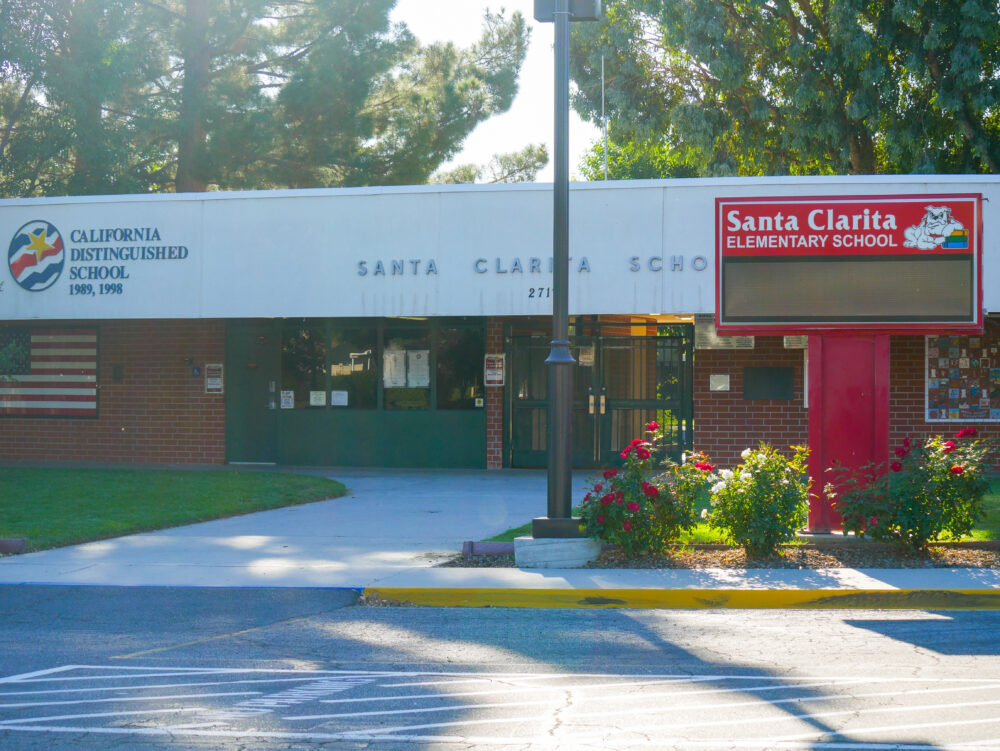Copyright Santa Clarita Valley Signal

As the Saugus Union School District governing board aims to make an informed decision on the fate of the former Santa Clarita Elementary School site, a city of Santa Clarita council member in the audience offered hope for the community that it may possibly fall under the city’s ownership in the future. Since the school closed in 2023, residents in the area have expressed through numerous public comments that the property should be turned into a recreational hub that can serve the community with enrichment programs for people of all ages. In order to do so, residents believe the property should be owned by the city. On Thursday at Bridgeport Elementary, during the second property disposition meeting in relation to the former school site on Seco Canyon Road, the governing board discussed in detail updates on Assembly Bill 130 and the recent changes the law has underwent that have impacted school site disposition. The bill was enacted on June 30 and immediately went into effect. At the first board study session meeting, Sarine Abrahamian of Orbach Huff & Henderson LLP presented the different options the governing board could take with the property. Some of those were the sale of the property, long-term leases, short-term leases, and change of property. According to the presentation, under AB 130, school district-owned properties that are deemed surplus property or property proposed for exchange may now fall under Housing and Community Development review unless another exemption applies. Abrahamian cited Government Code 54221. “Housing and Community Development is the oversight agency for making sure the public agencies are complying with the Surplus Land Act,” Abrahamian said. To follow the regulations of the process, the district governing board must appoint an Asset Management Committee, also known as the “7-11” committee, which was done previously. Their duties included advising on the use or disposition of excess real property, receiving information about the property, and the district then holding public meetings and hearings and making recommendations on the use of disposition to the governing board. Step three would be the board’s consideration of declaring the property surplus, which “the board has not gotten to, or there’s no indication that they will,” said Abrahamian during the presentation. “So the board will have to take a step to declare property surplus; they’d have to approve a resolution to do that,” she added. If the property is declared surplus property, it must be offered to entities including the state director of general services, regents of the University of California, trustees of the California State University, city and county where the property is situated, any entity that submitted a written request to be notified and possibly other agencies that are legally required to be notified. They then have 40 to 60 days to respond and if no response is given or an agreement cannot be reached, then the district may dispose of the property in any manner authorized by law, which includes requesting a waiver from the California Department of Education and selling or leasing the property to the highest bidder. If multiple offers are received, affordable housing developers proposing projects with at least 25% of units designated as affordable move to the front of the line, according to Abrahamian, citing her report saying, “what the AB 130 process did, it added this additional layer. The school district process does not require notifying low-income housing developers, the (Surplus Land Act) does.” Governing board member Matt Watson asked if the district chooses to surplus the property and not accept low-cost housing bids and choose to sell in the future, “How does this tie our hands?” Abrahamian responded and said that certain steps outlined in the presentation must be followed but in some cases up to 15% must be set aside for housing due to the SLA regulations, and the goal of the SLA is to give affordable housing developers priority. Governing board member Anna Griese then asked what it would look like if the district decided to sell the property and acknowledged that the 7-11 Committee did not provide the sale of the property as an option but, “I don’t believe the district should be landlords. I don’t believe that the district should be maintaining the property and managing tenants and things like that. I think the function of the district should be about the education of our students,” she said. Housing may not be a problem if the property is sold to the city, but Abrahamian said the city may face some exemptions if it acquires the land. City Councilman Jason Gibbs was present during the meeting, which sparked moments of possible perceived negotiations between the SUSD and city of Santa Clarita, but Watson and district Superintendent Colleen Hawkins stated the topic must be formally agendized and can be brought up for possible conversation after the board has had a closed session in relation to the matter. “This is really the only time the five of us are together in front of the public to have this discussion,” Griese said. “So, one of you individually, I hate to say this, doesn’t represent the actions of the board collectively. So for you to enter negotiations, even as small as a conversation, it is really not an active or binding piece and can’t be considered,” Hawkins responded. “We are the agents that do that for you, but we have not been given direction from the governing board on what you would want us to do. I think we need some additional information on the evaluation of the property and all sorts of things before we could enter to any of that.” The next step for the governing board to make a decision must take place during a closed session, Hawkins said, noting that matters related to litigation, anticipated litigation, or property negotiations are required to be discussed privately before any public action could be taken. During public comment, following a number of residents echoing each other about not turning the property into housing, Gibbs took the podium and acknowledged two letters of interest sent by the city of Santa Clarita to the district in relation to the property. “The city has been closely tracking the developments related to the future of Santa Clarita Elementary as this property does offer incredible potential to serve those living in and around the Saugus area,” Gibbs said, adding that the city has expressed its interest in the property directly with the school district through two letters. One was sent in August of last year and another in September. “So to clarify from the city, we have not submitted an offer because an opportunity to do so had not been established,” he said, acknowledging that the 7-11 committee process has only recently finalized but added, “Respectfully I ask that the district keep the city’s strong interest in mind as the future of the property continues to be deliberated. Our city staff is available to meet the district staff at any time to discuss the property and potential city involvement in its future use, in an effort to create a benefit for the entire community,” Gibbs said. During final remarks the governing board acknowledged that housing is not wanted by the community, and they will continue to prioritize that as they move forward with the decision-making.



